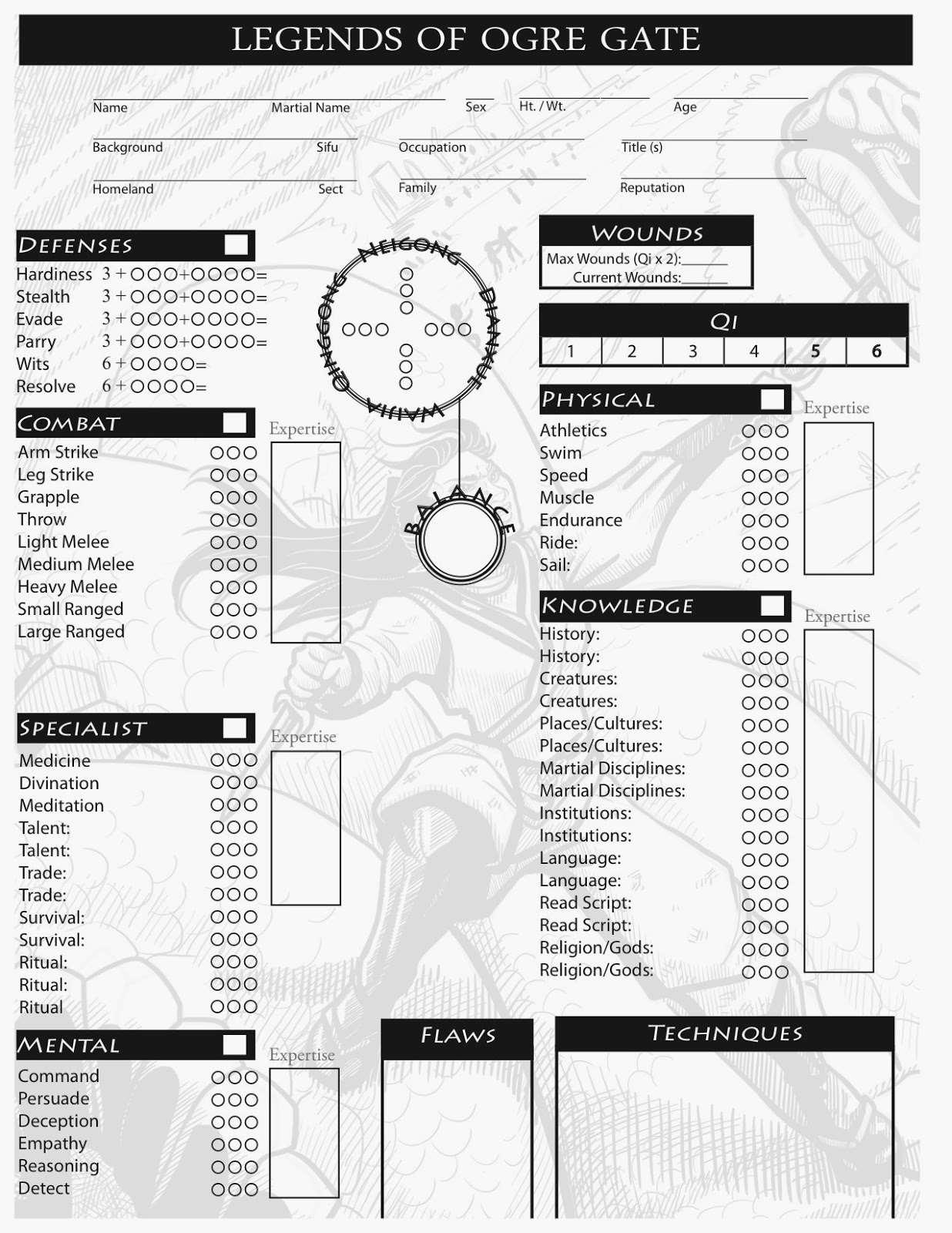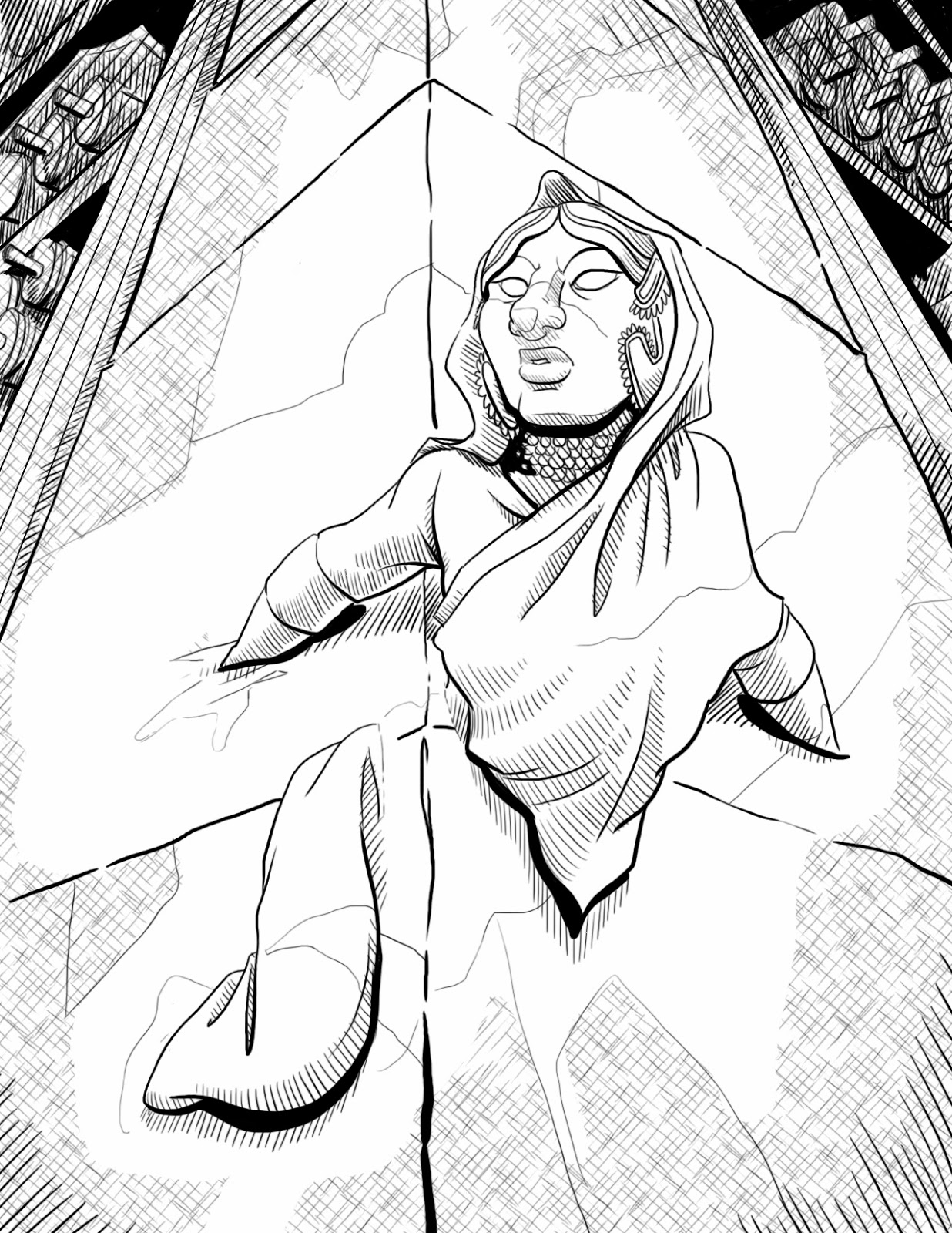Fate is important in the Wuxia genre. It crops up all the time, whether it's coincidental meeting of characters or bad things that just keep happening to the same person, again and again. We've tried to incorporate that into Wandering Heroes of Ogre Gate, but in a way that reflects the play style at our own table. This part of the game is still in development, and some of these ideas are either half-formed or just exploratory, so what I am about to discuss may change.
While we want to emulate the Wuxia genre, as a GM (and to a lesser degree as a player) my style is often described by the other people on the design team as tending toward realism. By that they don't mean I obsess of details or dig deep into the physics of a character falling thirty feet, they mean I care about the game feeling like it takes place in a real place. I tend not to push events or plot elements because they are convenient for what I want to do as a GM, I like them to flow from what is going on in the campaign naturally. This isn't said because I have disdain for other approaches, just to establish my own personal style in this regard.
So for me, the idea of just taking genre elements and making them so in a setting doesn't feel right. For me to do that, and for it to feel comfortable, the genre elements need to be a part of the setting itself. An example of this is our approach to fate.
In Wuxia characters talk a lot about things being fated. People were fated to meet, to fall in love, to be enemies, to lead a sect or suffer a series of personal tragedies. It becomes clear if you watch enough of it, that Fate is a real thing, it is the work of Heaven. In Wandering Heroes of Ogre Gate Fate is also real, it is part of the cosmology, and believed to reside with The Enlightened Goddess (I will discuss The Enlightened Goddess in more detail in a later blog entry).
On the one hand, I picture Wandering Heroes of Ogre Gate as a sandbox. I don't normally do pure sandboxes, but for some reason my Wuxia campaigns tend to fall mainly into that category. Maybe because the genre lends itself well to sandbox. So it is very much a game where the player characters wander around and explore the setting. On the other hand there is fate, and this is where the more active elements of the adventures can come in. In a way this gives the GM permission to go beyond simply having things happen because they flow logically from in-game events (though this is still a big default assumption of the setting). Sometimes things happen because of Fate. It isn't meant to be heavy handed, more of a light, and gentle presentation of developments to the players. Think of it as an occasional intrusion of Fate in the lives of the player characters.
There is also a Fated Flaw, that players can take at character creation. The Fated Flaw brings Fate into the game in a much heavier way than the light, occasional intrusion mentioned above. When a character takes the flaw, the GM secretly rolls on a chart, which presently has thirty possibilities. This is the characters Fate, and if you have the Flaw, it will come up often. Results can vary, but they can be anything from "fated to be adored by many admirers who want to be the one and only" to "fated to a life of grudges and blood".
We have only just developed this part of the game and began testing it this week. I had two players take the Fated Flaw, and incorporating those into the campaign has been interesting. As play tests continue, I will post about more about it. I imagine it will change a great deal from now until release of the Wandering Heroes of Ogre Gate PDF.












